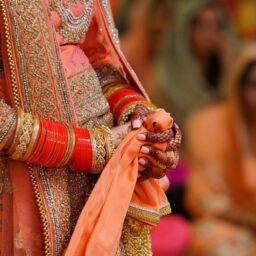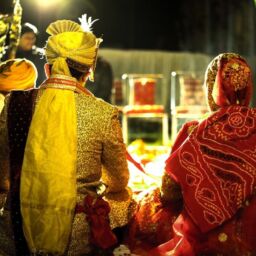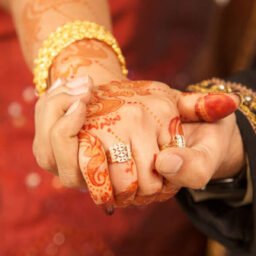Breakup primarily refers to the termination or disintegration of a relationship (between two people). It is the act of ending, dissolving and sometimes dumping one partner which forces the other partner to end the relationship. A breakup in a relationship is a pause, may be temporary or permanent from the other person, a period to think without having to be around the other person during the thinking period. If one compares separation and breakup then; Separation refers to the termination of the cohabitation between spouses. It is temporary and is legally recognized. On the other hand, a break-up refers to the end of an informal relationship between two lovers.
Moving higher in the separation level, after breakup comes judicial separation. Section 10 of the Hindu Marriage Act, 1955 talks and gives the scope of Judicial Separation for both the partners to the marriage, persons who are bound by their natural matrimonial ties under the Hindu Marriage Act, 1955. And because of judicial separation, partners can live separately but cannot marry other people. Any of the spouses can claim the relief and remedy of Judicial Separation under section 10 by filing a petition to the competent court of authority, primarily civil or district court of that area. Once the order is passed, they are not bound to have cohabitation and can live separately but their marriage won’t be considered void.
When the competent court passes the decree of judicial separation, the parties remain married as the decree of judicial separation does not dissolve their marriage unlike a decree of divorce which nullifies any kind of marriage. Instead, the decree of judicial separation simply relieves and grants remedy to both the parties to part out their ways and live independently and separately. The various grounds of judicial separations are: Adultery has been defined under section 13(1)(i)[1] of Hindu Marriage Act,1955, adultery means where any one of the partners to a particular marriage had sexual intercourse with any other person except his/her matrimonial partner. Here, the aggrieved party can claim the relief but if not primary then secondary proof as in form of evidence needs to be presented to the court to get the relief.
Another ground for judicial separation is cruelty under Section 13(1)(i-a) Hindu Marriage Act 1955, section 13(1)(i-a); when one partner to of matrimonial ties treats his/her partner with cruelty or inflicts any kind of mental or physical pain in any form whatsoever after the marriage, then the sufferer can file a petition to the court on the grounds of cruelty and can get the remedy in form of the decree of judicial separation. In the very famous case of Shyamsundar v. Shantadevi [1960] AIR 1961, in this case, the female spouse was badly beaten by her husband and harmed by her husband’s relatives, in-laws were treating her very badly and the husband also stood lethargically and did not take any affirmative to save his wife from all these, therefore taking no steps to protect his wife. The Court in this case observed and held that the intentional neglect and action of causing her wife harm on part of the husband to protect one’s wife amounts to cruelty on the husband’s part and therefore the wife can get the remedy of judicial separation.
Another ground of judicial separation is desertion under section 13(1)(i-b)[2]here, it is defined that if any of the partners of the matrimonial ties has left the other spouse for any reason and even without informing him/her for a period not less than 2 years before filing the petition to the court by another spouse, then the ground of desertion gives a right to the aggrieved party to claim the relief by filing the petition to the court for judicial separation.
Conversion is yet another ground under [Section 13(1)(ii)][3], According to conversion, if one of the partners of marriage gets converted into any other religion except Hindu, then the other partner in such cases can seek relief by filing a petition for judicial separation. In the very famous case of Durga Prasad Rao vs. Sudharshan Swami[4], it was opined and held by the court that in every conversion case, formal rejection of religion or operation of the sacred ceremony or such culture is not needed.
Unsoundness of mind under [Section 13(1)(iii)][5] also allows either of the spouses to get judicial separation from another spouse by invoking the jurisdiction of the court; If any partner in a marriage is suffering from any syndrome or illness which converts into hardship to live for the other partner with the sufferer. The other aggrieved party can well claim relief as judicial separation from the competent court.
Other grounds for judicial separation also includes such as bigamy under section 13(2)(i)[6], rape, sodomy under [section 13(2)(ii)][7]; the female spouse of the marriage has a right to file a petition for judicial separation if her husband is found to be guilty of charges like rape, bestiality or sodomy after they have tied the knots of marriage.
The word ‘divorce’ is at the top of the order in the separation hierarchical system and had not been defined under any statutory provisions but it could be explained as a legal dissolution of judicial ties established at marriage and it nullifies the marriage by declaring it as void. There are numerous theories of divorce likewise:
The fault theory of divorce is also known as the offence theory or even guilt theory[8]. This theory particularly states that a marriage can be nullified if it is found that any of the parties within the bond of matrimonial ties commits an offence against the innocent spouse of the marriage and there lies no fault on the part of the innocent party so innocent spouse can claim for judicial separation in this case. Thus, it is necessary to have completely a guilty partner and completely an innocent partner within the bond of matrimonial ties then only an innocent spouse can get the remedy as in the form of judicial separation and divorce. The innocent party only holds the right to seek remedy for the divorce implied he is innocent on his part. However, the most striking feature of the fault theory is that if it is found that both parties of the marriage are at fault there is no remedy available for them.
Then comes the mutual consent theory[9]; according to this theory, since two people marry each other through their free consent and will, so therefore at the same time, they can move out of that matrimonial ties willingly at any time and can hence end their marriage. In any case, it is highly criticized that this theory will advance immorality as it will prompt rampant separation, divorce and parties would break down their marriage regardless of whether there was a slight contradiction of personality and character or if there are minor fights. This theory is being used mainly by the upper-middle class and upper class as they avoid any sort of hindrance.
The rate of divorce in Indian society has grown to a large extent in the last two decades. Many reasons have been pointed and traced out for divorce and the dynamic ways of Indian society.
Some of them are; communication plays a very important role in any kind of relationship, especially in marriages. And, when there is no proper communication between the two spouses at regular intervals of time and when there is no openness between partners then, misunderstandings and fights are bound to take place. Therefore lack of communication sometimes becomes the major reason for separation and divorce.
Marriage is considered a sacred bond. Earlier there were no such provisions for judicial separation and divorce but later Hindu Marriage Act, 1955 provided all such provisions and primarily helped needlessly women who were and is subjected to harsh corners of marriage. Law has provided a way for both parties to end their relationship in case of a requirement to do so.
Author(s) Name: Aman Jaisawal (Chanakya National Law University, Patna)
References:
[1]Hindu Marriage Act 1955,s 13(1)(i)
[2] Hindu Marriage Act 1955,s 13(1)(i-b)
[3] Hindu Marriage Act 1955,s 13(1)(ii)
[4]Goona Durgaprasada Rao Alias v. Goona Sudarsanaswami And Ors., [1939] AIR 983
[5] Hindu Marriage Act 1955,s 13(1)(iii)
[6] Hindu Marriage Act 1955,s 13(2)(i)
[7] Hindu Marriage Act 1955,s 13(2)(ii)
[8] https://lawcommissionofindia.nic.in/reports/report217.pdf
[9] ibid















